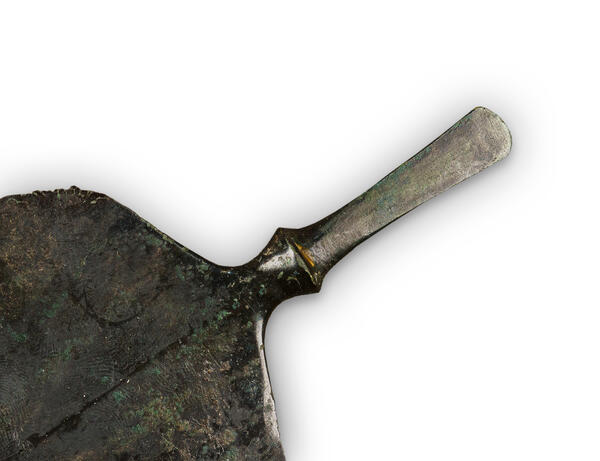This Bronze Age razor from the museum’s collection is part of the Tereshkovsky hoard. It was found on the banks of the Don River, near the village of Tereshkovo, in the Bogucharsky District of the Voronezh Oblast, in 1975. Along with the razor, the hoard contained six other items, including chopper-sickles and celt axes.
Ethnographic evidence suggests that various tools, such as flint fragments with sharp edges, were used for shaving purposes. Additionally, there is evidence to suggest that men in ancient times took time to groom their facial hair. The earliest depictions of men without beards or with mustaches and shaved beards can be seen on the walls of Paleolithic caves.
Metal razors were a prominent feature in numerous Bronze Age cultures across Europe and Asia. They are now believed to have been used in several cultures of Eastern Europe as well. Based on archaeological and ethnographic evidence, scientists believe that razors frequently held significant social and religious importance. Typically, they were discovered in wealthy male burials and formed part of so-called “votive hoards, ” which were offered as gifts (sacrifices) to deities in accordance with a vow, with the aim of seeking healing or fulfilling a desire.
Some razors featured ornamentation that carried a significant semantic load. They were based on two-edged cutting knives that were popular during the early Late Bronze Age and that spread across the Don–Volga–Ural region. One of the earliest indications of shaving practices in this region was provided by a metal razor discovered near the Staraya Toyda village in the Voronezh Oblast. It was made during the Late Bronze Age.
There is a hypothesis among scholars that metal razors may have served as a symbol of a warrior during that era. It is believed that such tools emerged alongside the proliferation of close-combat weapons. To prevent enemies from grabbing hold of the beard in close combat, it was necessary to shave it off.
Bronze Age razors have
often been found in graves alongside weapons. Therefore, it has been concluded
that such objects belonged to individuals of high status, likely warriors. The
common concept about prehistoric people as those who spent little time on
personal hygiene and self-care is not entirely accurate.



